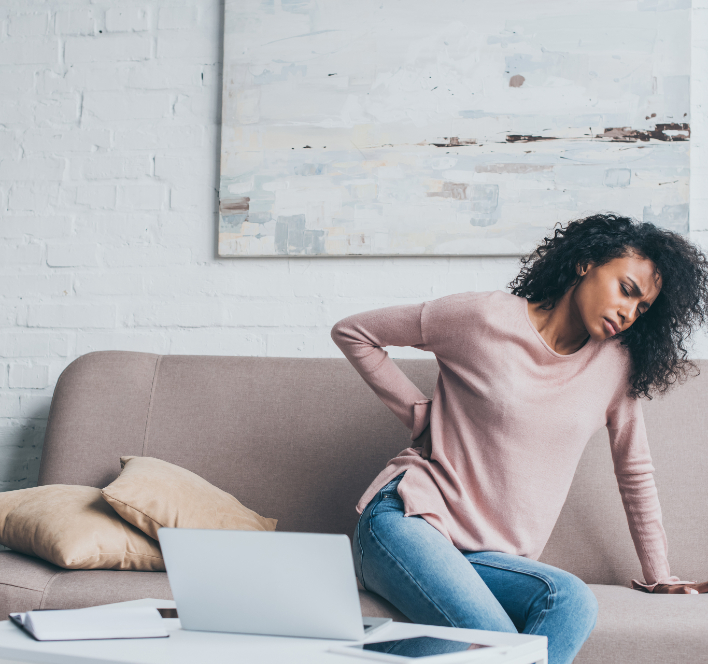Back spasms are relatively common and are a common cause of back pain. They are the involuntary contractions of the back muscles that are having a difficult time getting to a relaxed position. Spasms can…
At Orthopedic & Laser Spine Surgery, we want to make sure your back is in the best shape possible so you can live a pain-free and active life. There can be a few different reasons why your back hurts, and we are prepared to treat all kinds of issues. When you see one of our board-certified spine specialists, they will help you determine what is causing your pain and what the best route to healing is.
Back pain is commonly caused by a muscle or disc-related injury. When the pain persists, it may be time to see a doctor, but how can you determine if back pain is muscle or disc-related?
What is Muscle Pain?
Our primary back muscles consist of the latissimus dorsi (lats), rhomboids, trapezius, and erector spinae. All three of these muscles serve the purpose of stability throughout the shoulders, lower back, and core. Because they are all connected, it can feel like the pain is reaching throughout your entire body.
Muscle soreness occurs as you stress your muscles during workouts. During those exercises, the fibers in your muscles begin to break down, causing soreness and muscle pain. This means that the fibers are working to repair themselves and become stronger and healthier.
On the contrary, muscle pain does not always mean that your muscles are breaking down fibers and getting stronger. It can also mean that you have a muscle strain and therefore have torn your fibers. When they tear abruptly, they can cause major joint pain and injuries. This type of strain is extremely common in the shoulders and lower back. This can lead to debilitating pain, which can hinder movement and posture.
Soreness from exercise normally only lasts 2-3 days after your workout. If the pain persists past that point, it may be time to see a doctor and get treatment for a possible strain or serious injury. At OLSS, we will be here to help you treat your soreness and get you back to your life!
What is Disc Pain?
The spinal disc is an elastic-like muscle located underneath the spine. It is flat, round, and provides stability along with a wide range of motion. Disc pain is caused when a herniated disc slips out of place and causes major pain and discomfort. This can happen from heavy lifting or simply from aging.
When a disc is slipped, it could potentially cause nerve damage, which will create numbness, tingling pain, and immobility. Like most of the body, the back does have the ability to heal itself. You can try home remedies like ice and a heating pad to see if that helps ease the pain. Cold or warm compresses can also be effective in reducing inflammation and swelling.
However, when it comes to a potential slipped disc, it is essential to see a back doctor as soon as possible to avoid serious nerve damage and permanent pain. The tough outer layer of the disc can deteriorate over time, leading to conditions like herniated discs. When you see one of our accredited doctors at OLSS, you can feel confident you are in the best care and that they will assess the issue accurately.
The Difference Between Muscle and Disc Pain
The main difference between these two types of back pain is the location. Your spinal disc is at the bottom of your back, so if you have pain in your lower back, you may assume it is a slipped disc in the lumbar spine. Furthermore, the feeling of pain will differ between the two. Muscle strains will feel like post-workout soreness, while disc pain will feel debilitating and tingly.
It is helpful to know the difference before you see your doctor so you can accurately describe the pain to them. Persistent cases might lead to decreased muscle tone and the possibility of recommending an epidural injection of cortisone to reduce inflammation and swelling. Fortunately, you can trust that your doctors are the experts who will be able to help you no matter the case.
The Best Doctors for Your Back Pain Are at OLSS: Contact Us
Whether it is muscle pain or disc-related pain, the doctors at OLSS are eager to treat you and help you get back to feeling your best. We take a patient-first approach to our care and always do what is best for you and your body. Early detection of conditions like degenerative disc disease is crucial to prevent further issues. Give us a call at 407-712-8789 or reach out online to find out more! Initial back pain treatment regimens may include physical therapy, which encompasses massage, exercise, pelvic traction, therapeutic ultrasound, or electrical muscle stimulation.

